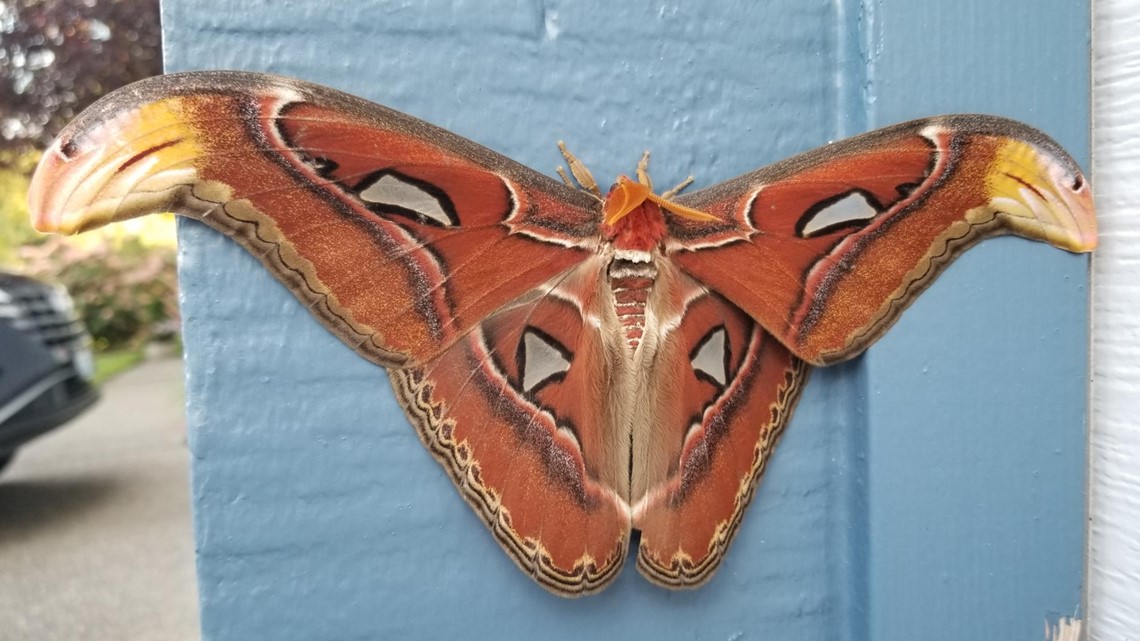BELLEVUE, Wash. — A moth with 10-inch wings that is most commonly found in the tropical forests of Asia was discovered on a homeowner's garage in Bellevue, according to the Washington State Department of Agriculture (WSDA).
Washington entomologists have now turned to the public for help to get more information about this sighting. They want to determine whether this is a one-time escapee or if there is now an atlas moth population in the state.
Anyone who thinks they spotted an atlas moth is urged to take a picture of it and send it to pestprogram@agr.wa.gov for identification.
The atlas moth does not pose a public health threat, so they can be safely photographed, handled and collected.
There have been no reports of atlas moths anywhere else in the country. However, if someone thinks they've seen it outside of Washington, they are also urged to take a picture of it, note the location, then report it to the State Plant Regulatory Official or State Plant Health Director in their state.


The moth was initially discovered on July 7, then officially identified by a University of Washington professor on July 27.
WSDA managing entomologist Sven Spichiger said he hopes the public will help with the research.
“This is a ‘gee-whiz’ type of insect because it is so large,” Spichiger said. “Even if you aren’t on the lookout for insects, this is the type that people get their phones out and take a picture of – they are that striking.”
There are some moth species that look similar to the atlas moth, according to WSDA. The main indicator will be the large size of the moth.


August also happens to be National Tree Check Month. The Department of Natural Resources (DNR) and WSDA encourage Washington residents to check their trees, water features and other outdoor fixtures this month for invasive pests.
In addition to the atlas moth, they say people should look for:
- Asian Longhorned Beetle: This wood-boring beetle attacks many hardwood trees, including maples, birches and willows.
- Asian Spongy Moth: Formerly known as the Asian gypsy moth, these insects lay dark brown egg masses on everything from tree trunks to lawn furniture. Many tree species are hosts to this insect, which can completely defoliate trees.
- Emerald Ash Borer: This small, green, wood-boring beetle is one of the most destructive forest pests in the U.S. Oregon confirmed the first sighting of this insect in the Pacific Northwest earlier this summer.
- Sooty Bark Disease: There have been recent confirmed outbreaks from Bellingham to Olympia. Host trees include bigleaf maple, red maple, sycamore maple, and horse chestnut.
- Spotted Lanternfly: This insect feeds on sap from many tree species, including those that grow fruits such as apples, cherries, grapes and plums. It also feeds on hops.

